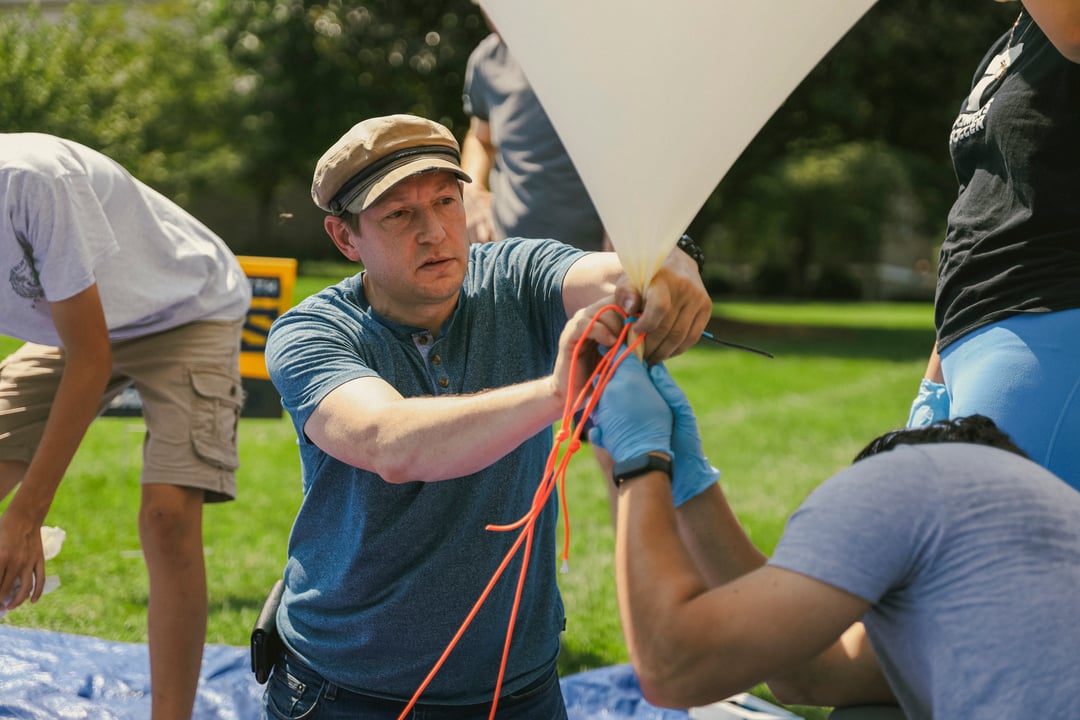Preds Grant Helps Trevecca Involve Youth in High-Flying Research
| Campus

Thanks to a grant from the Nashville Predators Foundation, local K-12 students were part of a Trevecca project to launch a high altitude balloon into the stratosphere.
Dr. Matthew Huddleston, a physics professor at Trevecca, has conducted similar balloon experiments for 13 years, but this time the project was designed to expose young students to new aspects of atmospheric and earth science.
“The main proposal was for Trevecca students to mentor younger students in the basics of what a high altitude balloon research flight is like,” said Huddleston. “A lot of schools want to incorporate something like this during the year, but it's hard to fit it into the schedule. We hoped by having it in the summer, it would become a real option for students to attend.”
The high-altitude balloon is filled with helium and launched 20 miles or higher into the air, reaching a height above 99% of the earth’s atmosphere, Huddleston said. It is equipped with sensors for measuring atmospheric conditions as well as cameras.
The program began in 2009 when Huddleston attended a high-altitude ballooning conference. He enlisted the help of a fellow physics professor to build the necessary equipment for the experiment.
“I thought ballooning would be perfect for our students at Trevecca, but there was equipment we would have to purchase to get it started,” said Huddleston. “I talked to Dr. Fred Cawthorne and before I knew it, he had come up with his own system that was superior to anything I’d seen out there for sale. It is a pretty powerful system for tracking, communicating, monitoring and controlling systems on high-altitude balloon flights.”
Huddleston’s hope is that through this experience, students come to a deeper appreciation of a lesser-known method of research.
“I hope that they found it exciting and I hope they learned a little more about the science of research helium balloons,” said Huddleston. “Balloons are a lot of fun to play with at parties, but they actually are also pretty useful for learning about the earth’s atmosphere.”
